
International Journal of Nanoelectronics and Materials
Scope & Guideline
Championing innovative methodologies in material research.
Introduction
Aims and Scopes
- Nanomaterials Synthesis and Characterization:
Research on various methods for synthesizing nanomaterials, including chemical, physical, and biological approaches. Characterization techniques are often employed to understand the properties and behavior of these materials at the nanoscale. - Nanoelectronics and Device Applications:
Exploration of the use of nanomaterials in electronic devices, including transistors, sensors, and photovoltaics. Studies often focus on performance enhancements and innovative applications of nanotechnology in electronics. - Energy Applications and Sustainability:
Research on the application of nanomaterials in energy systems, such as solar cells, batteries, and fuel cells, emphasizing sustainable practices and material efficiency. - Biocompatible and Environmental Nanomaterials:
Studies focused on the development and application of environmentally friendly and biocompatible nanomaterials, addressing issues related to toxicity and environmental impact. - Advanced Characterization Techniques:
Utilization of advanced techniques for material characterization, including spectroscopy, electron microscopy, and computational modeling to predict material behavior and properties.
Trending and Emerging
- Sustainable and Green Nanomaterials:
There is an increasing focus on developing sustainable nanomaterials, including those derived from waste or biowaste, to address environmental concerns and enhance sustainability in various applications. - Advanced Energy Storage Solutions:
Research on nanomaterials for energy storage applications, particularly in batteries and supercapacitors, is trending as the demand for efficient energy solutions rises. - Nano-Biosensors and Medical Applications:
The development of nanomaterials for biosensing and medical applications, particularly for disease detection and treatment, is gaining momentum, reflecting a growing intersection of nanotechnology and healthcare. - Integration of AI and Machine Learning in Nanotechnology:
Emerging research is increasingly incorporating AI and machine learning techniques to optimize the design, synthesis, and application of nanomaterials, enhancing predictive capabilities and efficiency. - Hybrid and Composite Nanomaterials:
There is a growing interest in the synthesis and application of hybrid and composite nanomaterials that combine various nanostructures to achieve multifunctionality and improved performance.
Declining or Waning
- Traditional Electronic Materials:
Research on conventional electronic materials, such as silicon and germanium, has seen a decline as focus shifts towards more innovative nanomaterials that offer superior properties and functionalities. - Low-Dimensional Materials:
Studies on low-dimensional materials such as graphene have become less frequent as the field matures and researchers seek to explore more complex composites and hybrid materials. - Basic Nanotechnology Applications:
Research focusing solely on fundamental nanotechnology applications without integration into specific fields (like electronics or energy) is declining, as interdisciplinary approaches gain more traction.
Similar Journals
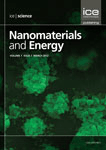
Nanomaterials and Energy
Pioneering research to power the future with nanomaterials.Nanomaterials and Energy is a pioneering, peer-reviewed journal dedicated to advancing the field of nanotechnology and energy applications. Published by EMERALD GROUP PUBLISHING LTD from the UK, this journal serves as a vital resource for researchers, professionals, and students involved in energy innovation and materials science. With an ISSN of 2045-9831 and an E-ISSN of 2045-984X, it is indexed within Scopus and has witnessed its ranking currently placed in the Q4 category for both Energy (miscellaneous) and Materials Science (miscellaneous) for 2023, demonstrating its emerging role in these significant fields. Nanomaterials and Energy aims to explore the convergence of nanomaterials with energy systems, fostering interdisciplinary collaboration and promoting novel technologies that can address contemporary energy challenges. While not an open-access journal, it is acknowledged for its rigorous contributions to scientific knowledge, making it an essential publication for those at the forefront of energy and materials research. The journal’s accessible format and comprehensive editorial policy ensure it remains an influential platform through 2024 and beyond.

SmartMat
Innovating Interdisciplinary Research in Chemistry and Materials Science.SmartMat is a cutting-edge, peer-reviewed academic journal published by WILEY, dedicated to the fields of Chemistry, Materials Science, and Mechanics of Materials. Launched in 2020, this Open Access journal aims to disseminate high-quality research and innovative findings that bridge these interdisciplinary areas. With an impressive impact factor reflecting its strong scholarly influence, SmartMat currently holds the prestigious Q1 category ranking in key domains such as Chemistry (miscellaneous), Materials Science (miscellaneous), and Mechanics of Materials, underscoring its relevance and importance in advancing material research. The journal is ranked among the top in its fields on Scopus, with 98th and 97th percentiles for Engineering and Chemistry rankings, respectively. Researchers, professionals, and students looking for a platform to share advancements in smart materials and their applications are encouraged to explore the wide-ranging access options available, enhancing visibility and engagement with global scientific communities.
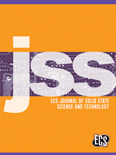
ECS Journal of Solid State Science and Technology
Illuminating the Path of Solid State ScienceECS Journal of Solid State Science and Technology, published by the Electrochemical Society, is a prominent journal dedicated to the advancement of research in the field of electronic, optical, and magnetic materials. With an ISSN of 2162-8769 and an E-ISSN of 2162-8777, this journal has established a significant presence since its inception in 2012, spanning critical developments in solid-state science that are essential for innovative technologies. Operating within the United States and recognized for its global outreach, it holds a respectable Q3 category ranking in the materials science category as of 2023, reflecting its commitment to high-quality research and its role in bridging theoretical and applied aspects of materials science. Researchers, professionals, and students alike will find vital information and cutting-edge studies that further the understanding and applications of solid-state technologies. The journal is accessible to an extensive audience, making it an invaluable resource for those engaged in the ever-evolving landscape of materials science.
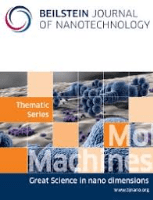
Beilstein Journal of Nanotechnology
Exploring the limitless potential of nanoscience.The Beilstein Journal of Nanotechnology is a prominent open access journal published by the Beilstein Institute that has been at the forefront of nanotechnology research since its inception in 2010. With a focus on cutting-edge developments in areas such as Electrical and Electronic Engineering, Materials Science, and Physics and Astronomy, this journal is ranked in the Q2 category across multiple scientific disciplines, reflecting its significant impact within the research community. The journal is accessible to a global audience and aims to foster innovation and application of nanotechnology across various fields. Featuring a rich convergence of interdisciplinary studies, the Beilstein Journal of Nanotechnology offers a platform for researchers to share their findings, thus advancing the frontiers of knowledge in this dynamic field. With publishers based in Frankfurt am Main, Germany, it continues to contribute to the scientific dialogue on nanoscience and its practical applications, making it an essential resource for academics, professionals, and students eager to stay at the cutting edge of technology.

Nano Futures
Empowering Researchers with Open Access to Nano DiscoveriesNano Futures, published by IOP Publishing Ltd, is an influential journal dedicated to advancing the field of nanoscale science and technology, encompassing a wide range of disciplines such as Atomic and Molecular Physics, Bioengineering, and Materials Science. With a growing impact within the academic community, this journal has achieved a notable Q2 classification in categories like Chemistry and Electrical Engineering, making it a critical resource for researchers, professionals, and students seeking to explore innovative advancements in nanotechnology. Established in 2017 and operating through 2024, Nano Futures provides open access options for readers, ensuring wider dissemination and engagement with cutting-edge research findings. The journal's commitment to showcasing high-quality research makes it an essential channel for exploring the intersection of nanoscale innovations and practical applications in various industries.
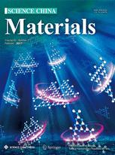
Science China-Materials
Innovating Tomorrow's Materials, Today.Science China-Materials is an esteemed peer-reviewed journal dedicated to advancing the field of materials science, published by SCIENCE PRESS. With a strong focus on innovative research and applications, this journal provides an essential platform for disseminating groundbreaking findings in materials development, characterization, and engineering. Since its inception, Science China-Materials has achieved an impressive Q1 ranking in the Materials Science (miscellaneous) category, reflecting its commitment to quality and the impact of its publications, as indicated by its 86th percentile ranking in Scopus. The journal is set to converge its contributions from 2016 to 2024, making it a vital resource for researchers and professionals interested in the latest advancements and trends in materials science. As an open access publication, it ensures that knowledge is freely available to a global audience, promoting collaboration and innovation across disciplines. The journal is headquartered in Beijing, China, and continues to attract high-quality submissions from leading experts in the field.
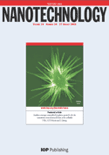
NANOTECHNOLOGY
Connecting Science and Engineering at the Nanoscale.NANOTECHNOLOGY is a premier academic journal published by IOP Publishing Ltd, focusing on cutting-edge advancements in the interdisciplinary field of nanoscience and nanotechnology. With a strong emphasis on research that bridges biology, chemistry, engineering, and materials science, this journal presents high-quality, peer-reviewed articles that cater to the diverse interests of researchers, professionals, and students alike. NANOTECHNOLOGY boasts an impressive ISSN: 0957-4484 and E-ISSN: 1361-6528, and holds a notable position within Scopus, ranked in the second quartile (Q2) across multiple categories including Bioengineering and Mechanical Engineering, underscoring its vital role in advancing the field. The journal's impact is further highlighted by its robust rankings, making it essential reading for those looking to stay at the forefront of nanotechnology research. Commencing in 1990 and with publication extending through to 2024, NANOTECHNOLOGY provides a unique platform for disseminating significant findings and innovative methodologies while fostering collaborations across various scientific disciplines. In a rapidly evolving technological landscape, this journal not only enhances academic discourse but also contributes to the practical applications of nanotechnology in real-world scenarios.

ACS Nanoscience Au
Catalyzing Collaboration in NanoscienceACS Nanoscience Au, published by the American Chemical Society, is a leading open-access journal dedicated to the rapidly evolving field of nanoscience. Since its inception in 2021, this journal has established itself within the top quartiles of academic publishing, ranking Q1 in both Chemistry and Materials Science for 2023. With a commitment to disseminating high-quality research, it provides a platform for innovative findings in nanomaterials, nanotechnology applications, and associated interdisciplinary studies. The journal is based in the United States and embraces an open-access model, ensuring that research is freely accessible to a global audience. This initiative not only enhances the visibility of authors' work but also facilitates collaboration across scientific domains. As a vital resource for researchers, professionals, and students alike, ACS Nanoscience Au plays a crucial role in advancing knowledge in the nanoscience community.

IEEE Nanotechnology Magazine
Connecting Researchers with Practical ApplicationsIEEE Nanotechnology Magazine is a premier publication dedicated to the dissemination of cutting-edge research and developments in the rapidly evolving fields of nanotechnology, electrical engineering, and mechanical engineering. Published by the esteemed IEEE-Institution of Electrical and Electronics Engineers Inc., this magazine strives to bridge the gap between complex scientific research and practical applications, catering to a diverse audience of researchers, professionals, and students alike. With an impact factor that reflects its growing reputation, the magazine is currently ranked in the Q2 quartile for both Electrical and Electronic Engineering and Mechanical Engineering, and Q3 in Nanoscience and Nanotechnology, showcasing its significant contribution to these fields since its inception in 2007. The publication does not offer open access options, indicating a traditional subscription model that maintains the integrity and quality of its peer-reviewed articles. With its headquarters in the United States, IEEE Nanotechnology Magazine is an essential resource for keeping abreast of innovations that have the potential to transform technology and society as we know it, emphasizing the importance of nanotechnology in contemporary research and application.

Discover Nano
Unveiling the Potential of NanotechnologyDiscover Nano is a pioneering journal published by SPRINGER, dedicated to the rapidly evolving field of nanoscience and nanotechnology. Established in 2023, this innovative platform provides an open-access forum for researchers, professionals, and students to share and disseminate cutting-edge findings in materials science and condensed matter physics. With its commitment to accessibility, Discover Nano encourages a broad spectrum of contributions, aiming to foster collaboration and stimulate discussion in this dynamic area of study. As a new entry into the academic community, the journal holds great potential for growth, aspiring to increase its visibility and impact in the materials science arena, where it currently ranks in the bottom quartile for both materials science and physics categories. Based in Germany and reaching a global audience, Discover Nano represents a significant opportunity for those looking to shape the future of nanotechnology through impactful research and interdisciplinary dialogue.